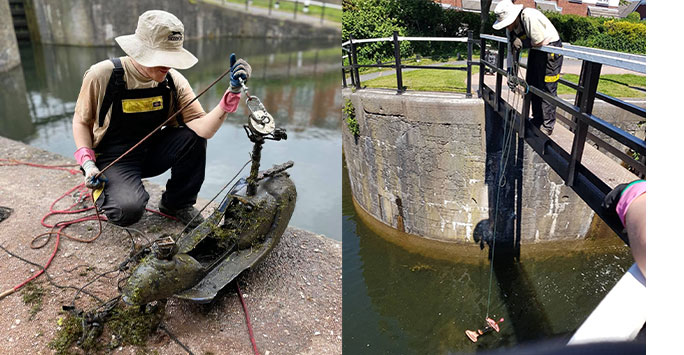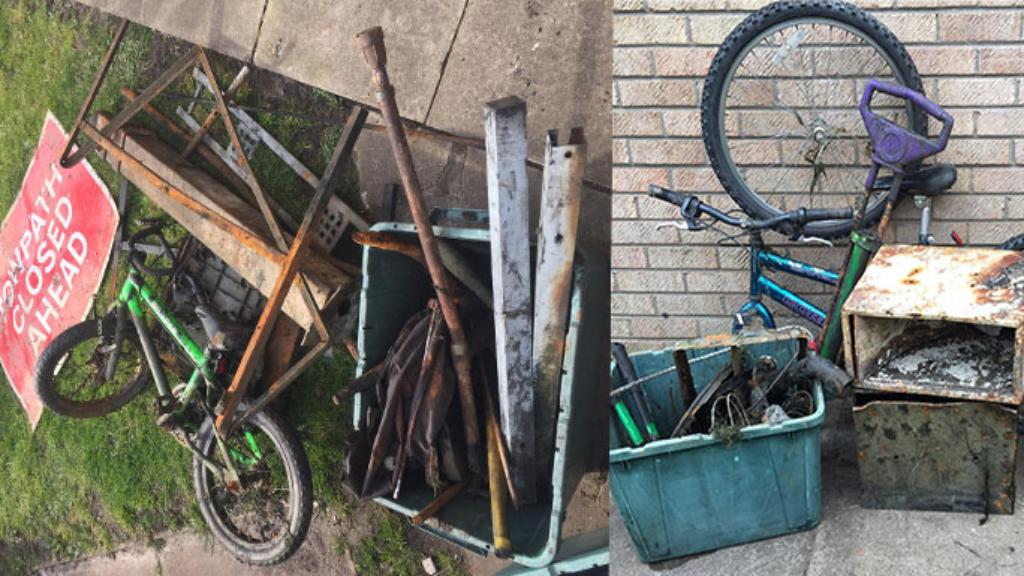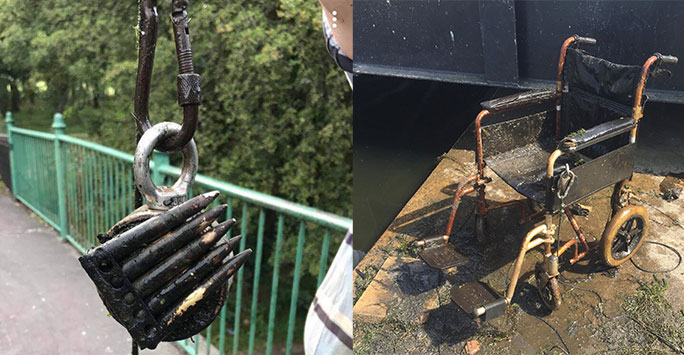
For a few years now, I have stood at the water’s edge holding a line of rope, and many a passer-by has stopped and stared. “What are you doing?” they ask, with curiosity and confusion. “Magnet fishing”, I reply, reassuringly. Some have seen it online. Some thank me for what I’m doing. Some think I’m trying to catch fish (“But fish aren’t magnetic!”). Most just enquire more about the hobby. “Magnet fishing? What’s that?”
Magnet fishing is a hobby growing in popularity. A large and powerful magnet, attached to a line of rope, is thrown into bodies of water (canals, lakes, rivers, ponds, etc.) in the hopes of attracting and removing discarded pieces of metal. If you’re looking to take up a new, inexpensive, and environmentally friendly hobby, as well as get a good mental and physical workout, then consider magnet fishing.

The Benefits
In terms of environmentalism, magnet fishing delivers on several fronts. By removing unwanted metal, you are immediately improving both the quality of water, and conditions for the ecosystems within it. Whilst your magnet is searching for metal, it’s not uncommon to snag onto other unwanted items, like plastic bags or tyres, that can also be responsibly disposed of. This allows plant and marine life to thrive.
Removed metal can further benefit the environment. It can be taken to a local scrapyard for recycling, improving sustainability and reducing the need for new energy-intensive metals. Some scrapyards will come and collect your finds, and others will buy it, making this a cost-neutral hobby, or even producing a small profit. Some items can even be restored and upcycled, and given a new lease of life. Along with friends, we have removed over four tonnes of metal from waterways in Merseyside alone – the equivalent of four saloon cars.
There are also mental and physical benefits. Mentally, magnet fishing has benefits similar to traditional fishing as a calming, relaxing, and reflective hobby, especially in nice weather. Physically, magnet fishing is a gentle all-round workout, not unlike golf, and you can expect to be walking, throwing, pulling, lifting, and squatting whilst you fish. There’s also a treasure hunting element, as you never know what’ll emerge. Aside from shrapnel, we’ve found shopping trollies, bicycles, knives, bullets, and even a 19th century revolver!

Getting Started: Tips for Beginners
Magnet fishing is an inexpensive hobby. Stronger magnets cost more, but for a good all-rounder, able to move most items, aim for a pulling power of 250kg for a single-sided magnet, or 500kg if double-sided. This currently costs around £30 with a rope (always make sure your rope is stronger than your magnet!). Avoid the temptation to go straight for the strongest magnet you can find: if you hit something that you can’t move (e.g. a motorcycle) then the magnet will not detach and you’ll lose it. You may also wish to consider optional extras to help with the larger items, e.g. a grappling hook, or a trolley to help transport finds.
Beginners should aim for artificial bodies of water first (e.g. canals). These are often made with flat bottoms, reducing the chance of hidden rocks or crevices snagging the magnet. When selecting your fishing spot, aim for areas with high foot or road traffic, as this is where metal is most likely to be discarded. Always remember to tether your rope to a fixed point, and finally, wear some old clothes, as you may get a bit wet and a bit muddy.
Have fun, and good hunting!